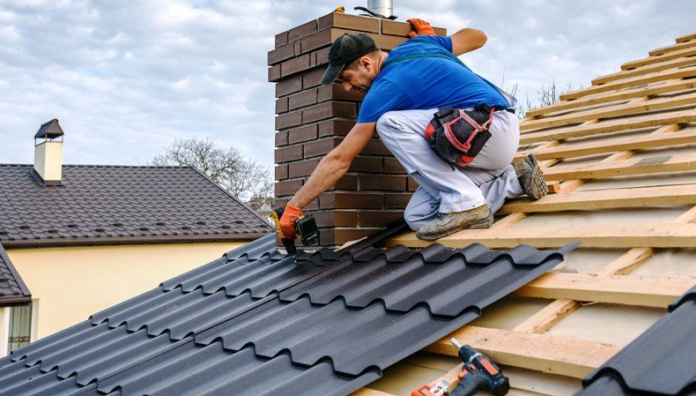When it comes to maintaining a home, few projects are as crucial as residential roofing replacement. A sturdy roof protects your family and belongings from the elements, enhances curb appeal, and contributes to the overall value of your property. This article will cover everything you need to know about roof replacement, from understanding when it’s necessary to the steps involved in the process.
When is Roof Replacement Necessary?
Knowing when to replace your roof is essential for homeowners. Here are some indicators that you may need a residential roofing replacement:
1. Age of the Roof
Most roofs have a lifespan of 20 to 30 years, depending on the materials used. If your roof is nearing the end of its life expectancy, it’s wise to start planning for a replacement. Regular inspections can help determine its condition.
2. Visible Damage
Look for signs of wear and tear, such as:
- Missing or Curled Shingles: This can indicate that the roof is no longer protecting your home effectively.
- Leaks and Water Damage: Interior water stains or leaks may signal roof failure.
- Granule Loss: Check your gutters for granules; their presence can indicate shingle deterioration.
3. Structural Issues
If you notice sagging or buckling in your roofline, it could signify a serious underlying issue. Structural problems often require immediate attention and can lead to the need for a full roof replacement.
Types of Residential Roofing Materials
Understanding the various roofing materials available can help you make an informed decision about your residential roofing replacement. Here are some popular options:
1. Asphalt Shingles
Asphalt shingles are the most common roofing material due to their affordability and ease of installation. They come in various colors and styles, making them a versatile choice for any home.
2. Metal Roofing
Metal roofs are becoming increasingly popular for their durability and energy efficiency. They can last 40 to 70 years and are available in various styles, including panels and shingles.
3. Tile Roofing
Tile roofs are known for their longevity and aesthetic appeal. They can last over 50 years but are heavier and often more expensive than other options.
4. Slate Roofing
Slate is one of the most durable roofing materials, often lasting over 100 years. However, it is also one of the most expensive options, requiring professional installation.
The Roof Replacement Process
Understanding the roof replacement process can help you prepare and ensure a smooth experience. Here are the typical steps involved:
1. Inspection and Assessment
Before the actual replacement, a thorough inspection is conducted by a professional. This assessment helps identify any underlying issues that may need addressing during the replacement.
2. Choosing Materials
Once the inspection is complete, you’ll need to choose the roofing materials that best suit your budget, aesthetic preferences, and climate considerations. Your contractor can provide recommendations based on your specific needs.
3. Permitting and Preparation
Most areas require permits for roofing projects. Your contractor should handle this process, ensuring compliance with local regulations. Preparation may also include removing the old roofing material and addressing any underlying structural issues.
4. Installation
The installation phase typically involves several steps:
- Underlayment: A water-resistant barrier is laid down to protect the underlying materials.
- Roofing Material Installation: The chosen roofing material is installed according to manufacturer specifications.
- Flashing: Proper flashing is installed around vents, chimneys, and edges to prevent leaks.
5. Cleanup and Inspection
After installation, a thorough cleanup is performed to remove debris. A final inspection ensures everything is up to code and functioning as expected.
Costs Associated with Roof Replacement
Residential roofing replacement can be a significant investment. Costs can vary widely based on several factors:
- Materials: Different materials come with different price tags. Asphalt shingles are generally the most affordable, while slate and tile are more expensive.
- Size of the Roof: Larger roofs will require more materials and labor, increasing costs.
- Labor: Labor costs can vary depending on your location and the complexity of the job.
On average, homeowners can expect to pay anywhere from $5,000 to $30,000 for a complete roof replacement, so it’s essential to budget accordingly.
Choosing a Contractor
Selecting the right contractor is crucial for a successful residential roofing replacement. Here are some tips for finding a reputable professional:
1. Check Credentials
Ensure the contractor is licensed, insured, and has a good standing with local business bureaus.
2. Get Multiple Quotes
Obtain quotes from several contractors to compare prices and services. Don’t automatically choose the lowest bid; consider the quality of materials and workmanship as well.
3. Read Reviews and References
Look for reviews online and ask for references from previous clients. A contractor with a good reputation will have a track record of satisfied customers.
Conclusion
Residential roofing replacement is a vital home maintenance task that can protect your investment and enhance your living space. By understanding when to replace your roof, the types of materials available, the replacement process, and how to choose a qualified contractor, you can ensure a successful project. Remember, investing in a high-quality roof not only improves your home’s aesthetics but also provides long-lasting protection for years to come. If you suspect it’s time for a roof replacement, don’t hesitate to reach out to a professional for an assessment. Your home deserves the best!
